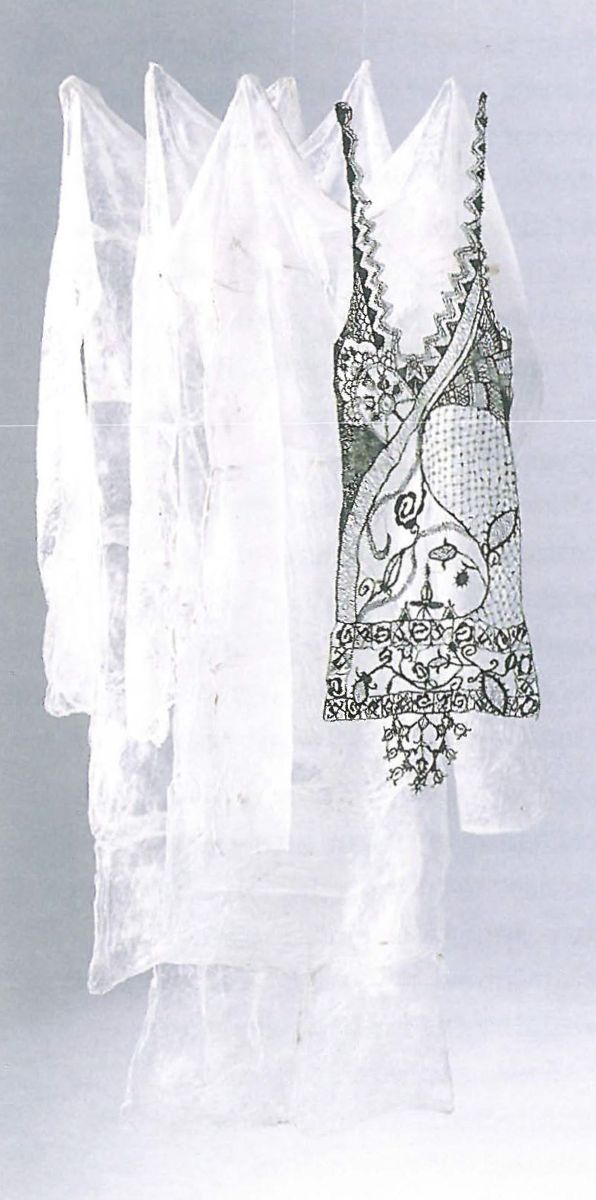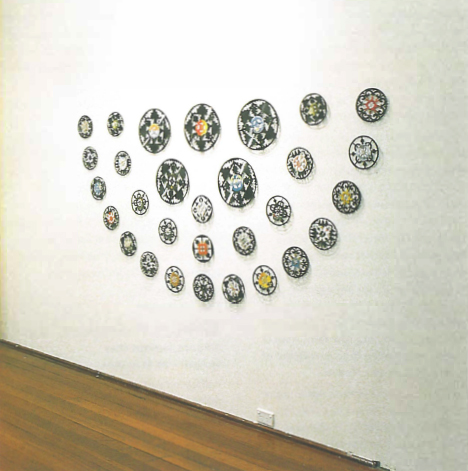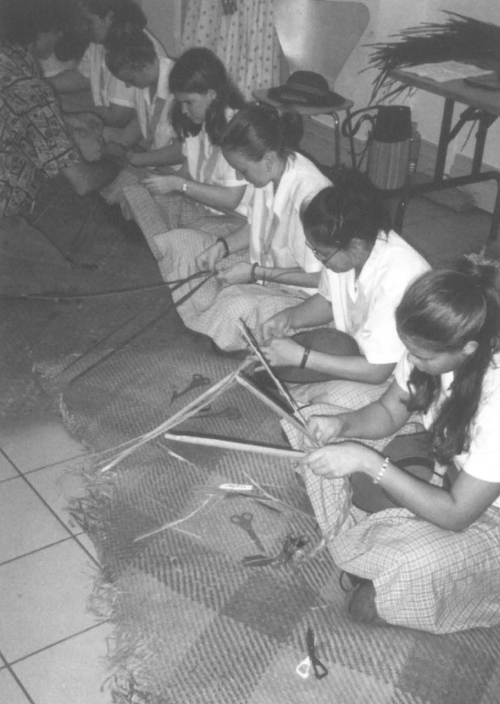
Lace - Contemporary Perspectives surveys the work of five artists whose practices address the cultural values assigned to lace. Initiated by Anne Farren, Lace draws together artists who arise out of quite different geographical locations. This gives rise to the varying particularities of the work in the exhibition. Each cultural framework has determined the methodology and emphasis of the artists' interpretive abilities that have then acted to uncover the complex history of lace.
It has been necessary for the artists featured in Lace to draw from the changing histories of lace prior to the twentieth century. Relegated to the unfortunate clichés of women's underwear and annoying children's clothes during the twentieth century, lace has been re-discovered through the work of these artists. This is not to say that the work of these artists has not addressed the current imperatives of lace. To the contrary each artist, to a lesser or greater extent, has referenced the narrowed position that lace now occupies.
Pilar Rojas's Erguidas maps her personal journey of rediscovery by revisiting her Spanish origins. Her subsequent observations on the loss of traditional cultural activities in Spain during the latter part of the last century inform the work. Nine wooden stands in a large circle hold nine ceramic vessels that in turn support interconnected lace doilies. For Rojas the empty circle of her work simultaneously highlights this loss of historical Spanish communities and the structural patterns of lace.
Suzumi Noda also refers to the dissolution of the social fabric evident within contemporary culture. Noda's work is an installation of separate objects that work together to critique our unattainable desire for beauty and its subsequent impact on current notions of representation. Price tags and plastic wire are knitted together to form garments and home furnishings. The circular forms of lace become metaphors for the relations between things, in particular, market capitalism and its reliance on consumption as the singular driving force of culture. Lace and its reliance on holes and strings of connectivity is then really a tool for Noda to examine representational devices and the increasing fragmentation of strong societal structures.
Anne Farren shares this interest with Noda though Farren's exploration is perhaps more aesthetically sophisticated. A line of black and a line of white almost shapeless Japanese silk garments are placed behind intricate lace undergarments. Interestingly, the lace undergarments, whilst seemingly accurate, are constructed to fit a body size no bigger than size six but as tall as six foot. Farren's investigation into body and representation has long been the central concern of her practice. The resolution of the work in this exhibition is evidence of her commitment to a theme.

Pam Gaunt's contribution is rather more ambiguous than the rest of the work on offer. Half-formed circles, made up of smaller circles sit on opposing walls. The form of the semi-circle points quietly to narratives in process. The stronger of the two works is a series of old vinyl records from the artist's past. Lace patterns are carved out of the vinyl, rendering the record useless, accept as an aesthetic device. The simultaneous nostalgia of the artist's memories and the histories of lace itself, sets up a poignant narrative that remains partly impenetrable to the viewer. The decision to avoid the literalness of much of the other work gives Gaunt a visual poignancy that allows the varied narratives of lace to resonate on a deeper, more symbolic level which is the strength of her work. The works' richness of textuality provides the most illuminating path to reclaiming the significant but sadly lost histories of lace.
Michael Brennand-Wood, a long time colleague of Gaunt, also employs similar devices to reclaim the various histories of lace. Nine large circles made of aluminium, paint and fabric are used to visualise the traditional patterns of lace and also similarly constructed architectural formulae employed by cultures long since dead. Brennand-Wood's task is to re-examine and re-position the masculine in lace. This is a commendable and interesting thesis, but perhaps deliberately, it lacks the deft attention to detail and materiality evident in Gaunt's work.
Lace - Contemporary Perspectives was a significant contribution to the Perth International Arts Festival and the only craft exhibition in the festival. The strength of the exhibition was diminished by the small size of the CRAFTWEST gallery, challenging the work in its attempt to stand alone. Notwithstanding this, it is a strong visual map that indicates the possibilities lace provides in redefining contemporary craft and culture.












